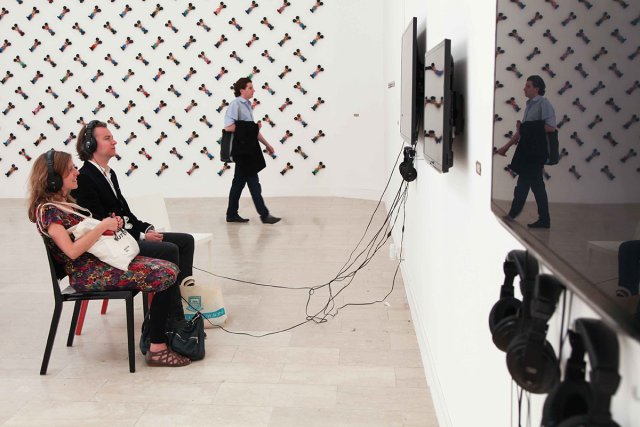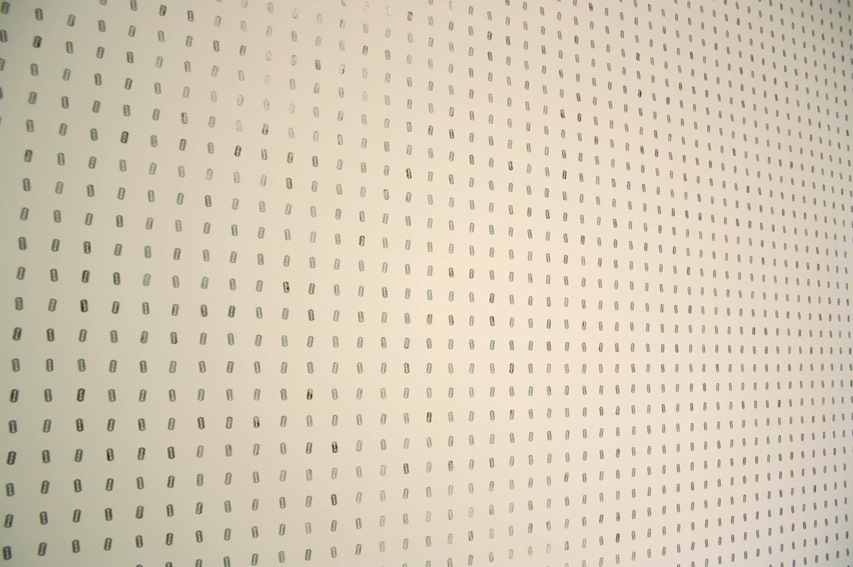NOTHING BETWEEN US

Pavilion of the Republic of Serbia, 55th International Art Exhibition, la Biennale di Venezia Inauguration: 12.30 PM, 30th of May 2013

Vladimir Perić (Talent Factory)
Commissioner’s Foreword (an excerpt) Maja Ćirić: Nothing Between Us breaks with the traditional laissez-faire approach to art, by which the political, whose reflections are dominant in the art world, outweighs the artistic. Therefore, I think it is important to define this place of national representation as the place whence the distortions of the global art world emanate. Viewed from the standpoint of cu- ratorial geopolitics, la Biennale di Venezia, as a microcosm representing the art world(s), has, to date, always operated according to two sets of criteria: those manifested in the national pavilions and those applied in the central exhibition. Serbian artists, as representatives of a “minor” art world, have consistently been underrepresented in the central ex- hibition (unless of course they prob-lematise political images of war, such as in the case of Zoran Naskovski in 2007). Thus, the only framework through which they have been able to demonstrate their productions and practices has been the national pavilion.
Nothing Between Us is the result of an act of self-authorisation, based on critical reflection and the questioning of gov- ernance provoked by the Encyclopedic Palace as the theme of the central exhibition. It is a response to such exhibition that has been inspired by the visionary practices that emerged from the outsider’s stance of Marino Auriti. By focusing on specific liminal niches that embody creativity through collecting, it addresses the art world at large, which is based on the national-international operations set. Due to the differences in their practices and generations (one from the 60s, the other from the 70s), the pairing of Vladimir Perić and Miloš Tomić would not seem justified, but they come together in a rearticulation of the individual politics of day-to-day life under the conditions of “bare life” . In the man- ner of the Fluxus artists, both Perić and Tomić are first-class noticers of things, everyday things most people would find trivial or mundane Vladimir Perić creates his works from abandoned objects he has accumulated over a long period of time, giving them new meaning by inserting them into his installations. Miloš Tomić instead rearticulates situations by producing sounds that have no ideological weight, sounds in a state of neither becoming, nor ending − they just flow. Neither of these artists is seduced by “the promise of recognition and reconciliation”. They are changing the viewing angle, not only towards the objects, but also towards the art world itself. If we agree that neo-fluxus artwork grows out of intuition and play , then these artists perform on a play stage, thereby disregarding the art world as a game with rules and regulations, a strategic self -awareness, a non-space that you must know to be part of.
What we are doing now is contemplating the sphere between the existing territory and the new ground in our contem- poraniety. We are establishing links between the everyday, art and the modes of operation inherent in the art world. Serbia’s art world, as a minor art world, has the choice of adapting to the existing market-oriented territory, or to establish new ground. We do not wish the national state to become a paradigm of the over-coding that is based on compensatory reterritorialisation, but seek new models for new realisations. The only compromises we are willing to make are to the current epoch. The limits of what we are become the limits of what we can become. Instead of being condemned to impotence, these works represent vital contradictions; these artists are capable of creating a different set of operations. One possibility is to participate in the international-national operations set, as a result of which the values of minor nations remain localised and will never become of any interest or use to the world. The other path is to play on the fact that a minor nation, because it embodies many contradictions, contains elements capable of uniting those very contradictions and thereby create new roles and relations in the global art world.
If the political platform is withdrawn, two possibilities are left: remain based on the existing territory, or focus on that which is available in the everyday. The minor art world of Serbia is now focusing on the new horizons achievable through the means of art horizons that open up to plurality in the world of art. To say that there’s nothing between us implies a plurality of individual voices, because they are the ones in a permanent state of becoming.
Project: Nothing Between Us
Commissioner: Maja Ćirić
Exhibitors: Vladimir Perić and Miloš Tomić
Advisory Board: Milica Pekić, Darka Radosavljević, Dejan
Sretenović, Stevan Vuković, Nikola Šindik
Booklet conceived by: Aleksandar Zograf
Communications Assistant: Milena Gnjatović
Technical Assistant: Milica Stojanov
Supported by: Ministry of Culture and Media, Republic of Serbia
Production and organization by: Museum of Contemporary Art,
Belgrade
In-kind support: Moritz Eis




